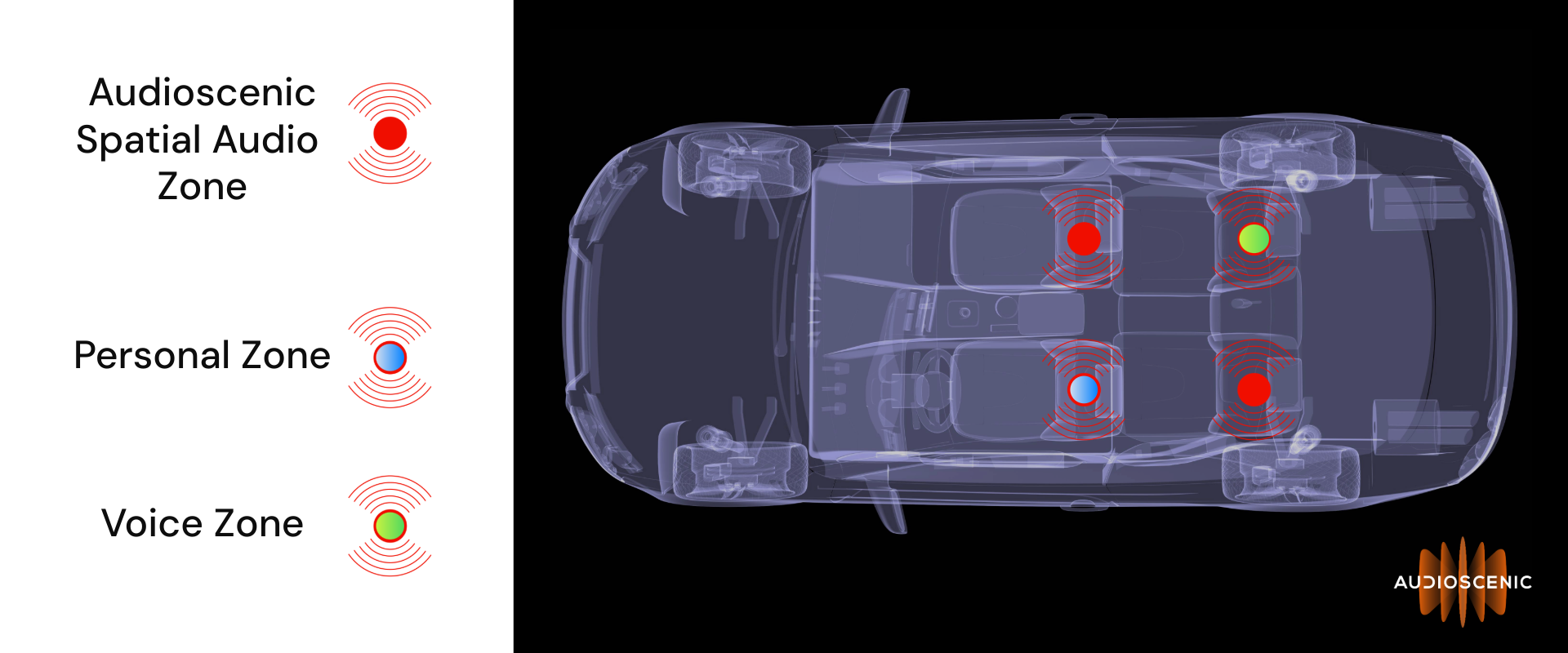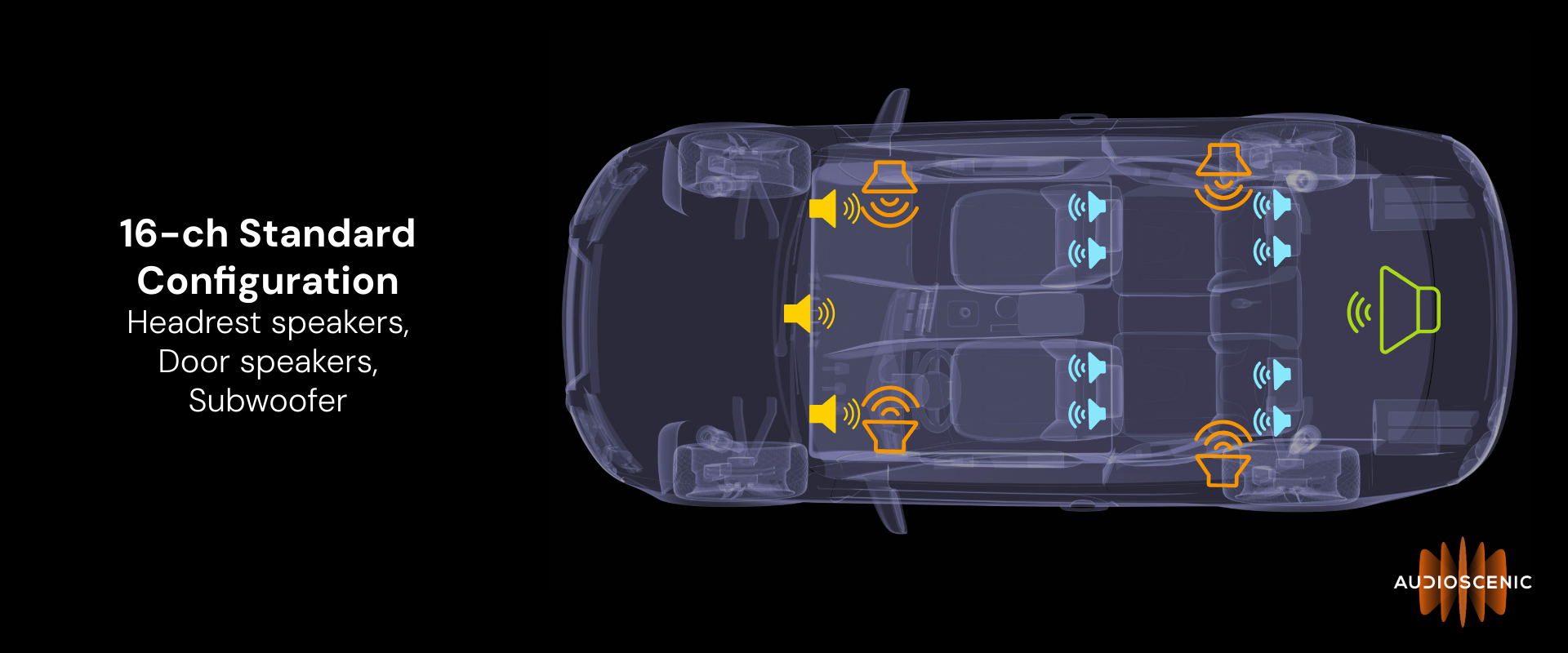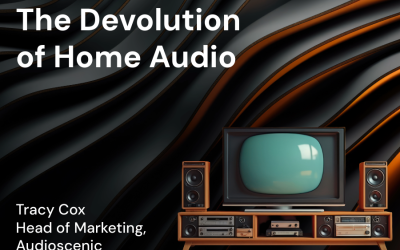The Stagnant State of the Art

Marcos Simon, CEO & Co-Founder, Audioscenic
The in-car experience has changed significantly over the last 10 years – infotainment systems, smart connectivity options, sensors on everything and advanced driver assistance are the norm, even on many budget models. At the same time, the audio experience in the cabin has remained surprisingly static.
Even many premium vehicles still use audio systems that largely follow the conventional stereo or multi-channel panning paradigm – even in some of the more advanced Dolby Atmos implementations.
Panning-based technologies are designed to deliver a single “sweet spot” – typically the driver’s seat. Even with clever DSP, the system is optimised for one physical position. Other occupants often don’t enjoy the same fidelity or sound quality.
Some newer car designs incorporate headrest speakers and use advanced DSP techniques (for example crosstalk cancellation) to attempt spatial effects. However, crosstalk-cancellation systems frequently suffer from having an extremely constrained sweet spot. Passengers markedly taller or shorter than the system is designed for, or moving even moderately in their seat, don’t benefit from the effect.
Unless the system is properly calibrated to the user, the experience can be a little too obviously a sound that’s emanating from a headrest speaker. It’s not delivering a believable spatial soundfield.

There are a few premium manufacturers who currently offer high-speaker-count systems that provide better spatial immersion and more consistent sound quality to more than just the driver. Presently, these systems remain expensive and restricted to high-end models. The challenge remains: How do we take spatial audio in the car cabin and make it accessible to the mess-market?
Bringing Spatial Audio into the Cabin
This is exactly where the Audioscenic’s proprietary Amphi automotive technology comes into play.
Our vision is to enable multi-seat binaural reproduction in the automotive environment. In other words, no longer is there just one “sweet spot”, each seat has its own. We all know a road trip isn’t a road trip without the right soundtrack – now, imagine if every passenger is hearing the soundtrack as if they were sitting in the mixing engineer’s seat.

Because we control sound delivery to each occupant independently, we also enable entirely new use-cases. For example, navigation directions can be directed specifically to the driver, or a call can be routed directly to a passenger without everybody in the car being broadcast the whole conversations, instead they remain immersed in music. Beyond this, they can also have independent control of volume or EQ settings, for true personalisation.

Achieving Individualized Audio in the Car
The Audioscenic Amphi system uses the car’s existing speaker infrastructure plus headrest speakers, paired with a 6-degrees-of-freedom (6DOF) position-adaptive system connected to AI-powered occupant-monitoring technology.
By tracking each user’s ears in real time, we can apply advanced position-adaptive algorithms to deliver separate signals to each ear. Leveraging decades of research from consumer spatial audio systems, we deliver a full-range hi-fi experience and, from around 80 Hz upwards, we adapt the spatial sound-field to each passenger’s location.
The real advantage? By combining position-adaptive spatial audio with headrest speakers, we can deliver multi-seat spatial audio using a modest speaker configuration. For example, our minimal reference implementation uses just 16 speakers to provide a high-fidelity multi-seat spatial-audio experience.

With this approach, we apply head-related transfer function (HRTF) processing tailored to occupant ear positions and generate a full three-dimensional audio experience via the headrest speaker pairs and standard cabin loudspeakers.
What Next?
The future of spatial audio for cars is already here. With increasing adoption of immersive formats such as Dolby Atmos in vehicles, spatial audio must break out of the confines of home theatres or headphones and move into the car cabin. Here, solutions like ours make it feasible at scale.
As automotive audio evolves, the value proposition shifts from loudspeaker count to enhanced and personalized audio – intelligent, position-adaptive sound-field control that delivers immersive experiences for every occupant.
Stay tuned as Audioscenic leads the way in redefining what in-car audio can deliver.
Join the revolution: Sign up to our Newsletter for exciting updates.


